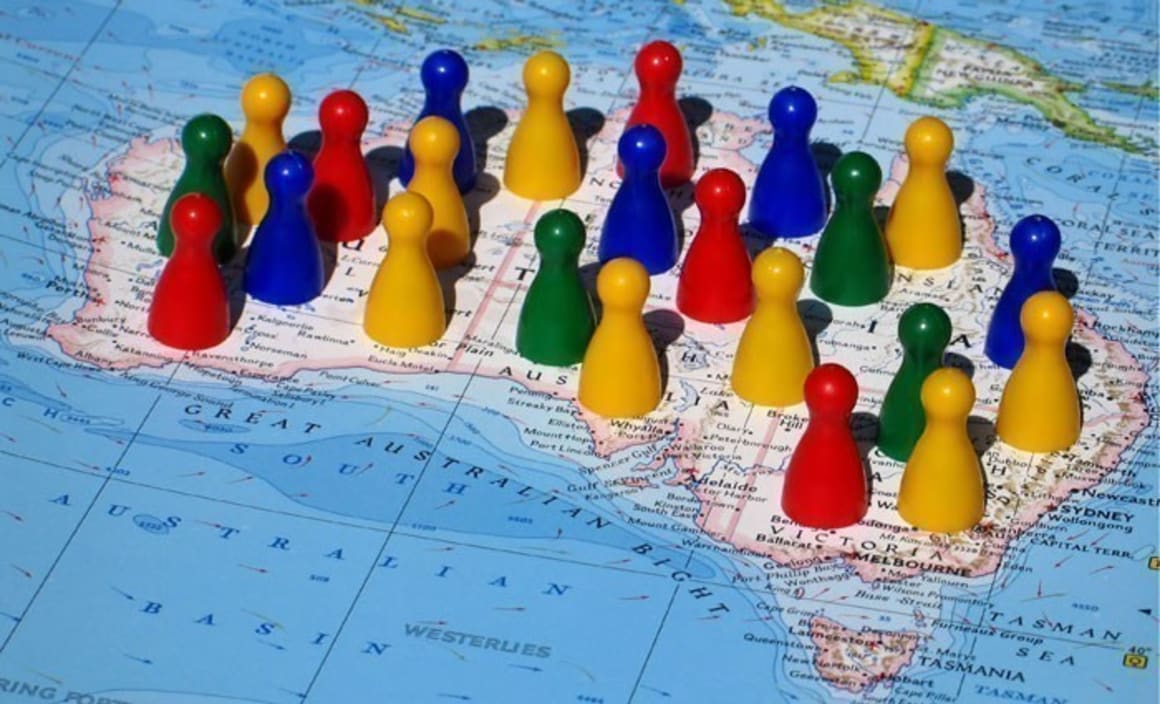ABS stats reveal population growth is escalating in NSW and Victoria

Yesterday the Australian Bureau of Statistics (ABS) released its quarterly demographic statistics for September 2013. Unfortunately this data set has a significant reporting lag nevertheless it is still a valuable regular release.

Over the September 2013 quarter, the national population increased by 100,556 persons or by 0.4%. Throughout the 12 months to September 2013, the national population has increased by 1.8% from 22.8 million persons to 23.2 million persons (405,446 new residents).

Looking at the components of national population growth, natural increase (or births minus deaths) was recorded at 164,428 persons over the past year and was 2.9% higher compared to September 2012.
While the rate of population growth is accelerating in New South Wales and Victoria it is slowing or stable across all other states.
In fact, the rate of natural increase is now at a record high level.
The other component of population growth at a national level is net overseas migration. Over the 12 months to September 2013, there were 241,018 net overseas migrants; the figure was 1.0% higher than over the previous year. Although net overseas migration was higher over the year, it actually fell compared to June 2013.

Looking across the individual states, population growth over the 12 months to September 2013 was greatest in Victoria (110,537), New South Wales (108,067), Queensland (83,737) and Western Australia (76,346).
These four states accounted for 93.4% of total population growth over the year. Annual population growth for New South Wales was at its highest level since June 2009 (110,294), in Victoria growth was at its highest level since September 2009 while in Queensland and Western Australia population growth was lower than in June 2013 (88,598 and 81,327 respectively).

Looking at the rate of population growth over the year, it was fastest in Western Australia (3.1%), Victoria (2.0%) and Queensland and the Northern Territory (both 1.8%).
At 1.5%, New South Wales’ rate of population growth was at its highest level since September 2009 and in Victoria population growth was at its highest level since December 2009. While the rate of population growth is accelerating in New South Wales and Victoria it is slowing or stable across all other states.
Most notably, the rate of population growth in Queensland is at its slowest pace since September 2011 and in Western Australia it is at its slowest pace since December 2011.
The Australian Capital Territory has also been recording strong population growth recently however, the 1.6% growth over the past year is the slowest rate of growth since December 2006.
The data indicates that population growth is escalating into the two most populous states, New South Wales and Victoria, which, perhaps not so incidentally, are also showing the strongest housing market conditions.
In each other state and territory the rate of population growth is generally waning.
Overseas migration may have also peaked which is no surprise given that the mining investment peak may have already or is expected to shortly pass.
We believe that population growth will remain at high levels on an historic basis however, it would not surprise us to see the rate of growth slow further over the coming quarters.